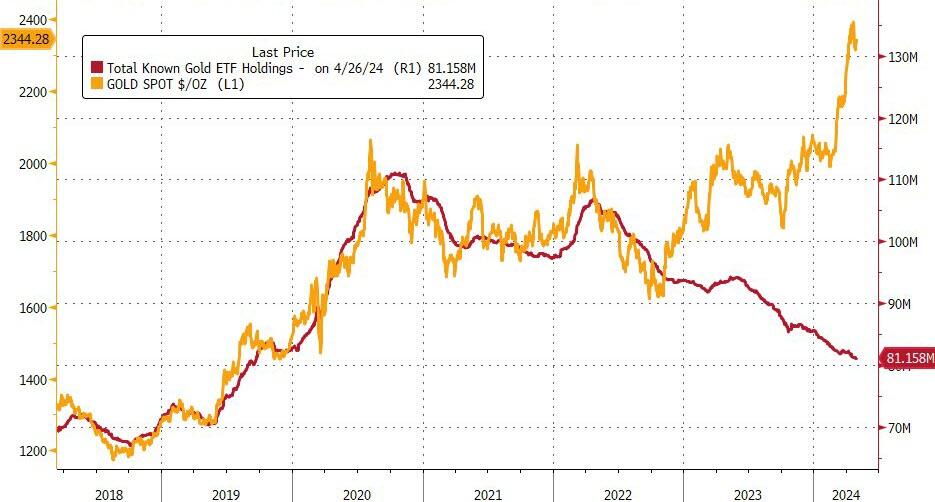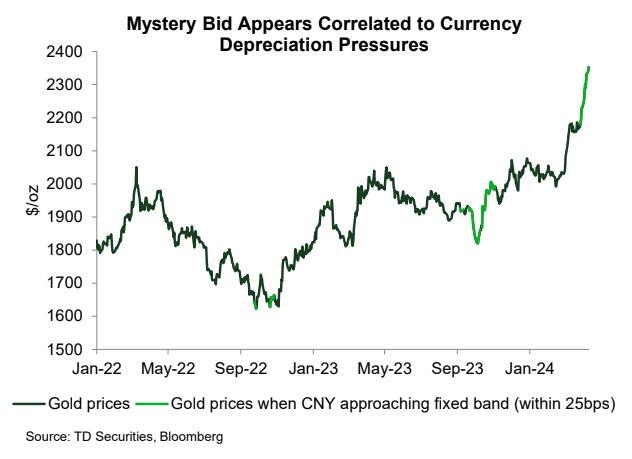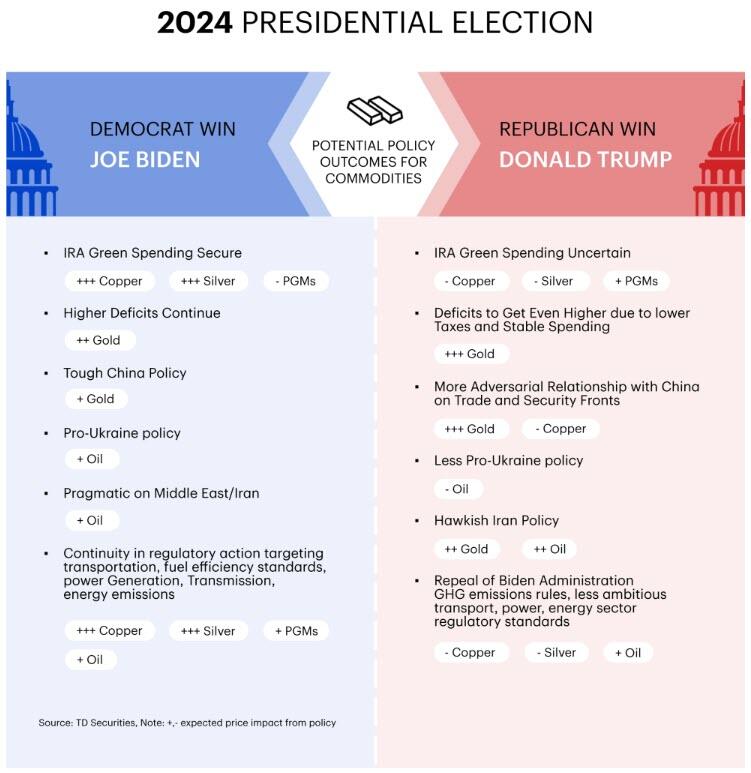Who could have seen this coming?
In November 2023, with gold trading around $1900/oz, we highlighted the beginning of a precious metal buying-binge from China, noting that the prcie for physical gold had never been more expensive at the time (while western gold prices were still below their prior record highs).
Additionally we noted the total lack of demand for so-called ‘paper gold’ via ETFs as holdigs underlying these vehicles was declining, as investors rotated from paper to physical:
“The rising interest in gold bars and coins was primarily driven by investors’ safe-haven demand, supported by global geopolitical instability and weak performance of investment products denominated in Chinese yuan.”
Source: Bloomberg
Now, a few months later, we get confirmation as The South China Morning Post reports that consumers in China bought 308.9 tonnes (10.9 million ounces) of gold in the first quarter, representing a 5.9% increase compared to the same period in 2023.
Having burned out in Chinese gold ETFs, we recetly noted that, amid a notable pick up in capital flight that the Chinese had “grabbed gold by the throat.”
Sure enough, as SCMP points out, Chinese consumers are increasing their appetite for gold, seeking to protect their assets amid a volatile stock market, a depreciating yuan and property doldrums, which analysts said would continue to boost international gold prices coupled with geopolitical uncertainties.
Purchases of gold bars and coins, which largely reflect investment and hedging demand, surged by 26.8 per cent year on year to 106.3 tonnes, while gold jewellery sales declined by 3 per cent from a year earlier to 183.9 tonnes.
“Gold represents the only safe asset for [Chinese consumers] to protect their wealth against domestic inflation, asset price declines as well as against geopolitical risks,” said Chen Zhiwu, the chair professor of finance at the University of Hong Kong.
“I expect Chinese household demand for gold to rise more in the future. And the Chinese central bank will also continue to purchase more gold to prepare for more geopolitical turmoil ahead.”
China’s central bank bought 160,000 ounces of gold bullion in March, marking its 17th consecutive monthly purchase and bringing its total reserves to 2,262 tonnes (72.74 million ounces), as it aims to diversify holdings away from US bonds amid strained bilateral relations.
“The escalation in gold holdings by global central banks, coupled with heightened gold demand in the Chinese market, has emerged as significant drivers propelling recent gold prices beyond market expectations,” the Bank of China said on Friday.
“In the future, gold prices are expected to sustain their robust upwards trajectory, driven by ongoing global central bank efforts to de-dollarise, escalating geopolitical uncertainty, and shifts in the [US] Federal Reserve’s monetary policy,” the report said.
China eclipsed India as the largest purchaser of gold jewellery in 2023, with consumption totalling 630 tonnes last year, representing an annual increase of 10 per cent.
“The China story is one of the reasons supporting gold prices, but the global risk-off sentiment is also fuelling the demand,” said Gary Ng, senior economist at Natixis Corporate and Investment Bank, who expected China’s demand for gold to remain resilient in 2024.
“Beyond China, whether the US can take inflation is another determinant for future gold prices, which is probably the biggest uncertainty.”
However, as TD Securities’ Daniel Ghali points out another potential source of gold strength.
With little trace in exchange data, buying activity must be OTC. However, price action in basis, forwards, and BoE gold suggest the buying program is price insensitive, has a sense of urgency, and deep pockets. This mysterious bid may point to curiously aggressive OTC buying activity, which appears to be highly correlated with acute currency depreciation pressures.
Ongoing currency pressures could explain the sense of urgency behind this bid, with a high correlation with the CNY’s deviation from its fix inching towards its fixed band.
Historically, this has been associated with a significant outperformance as the exceptional buying activity underpins a squeeze from those using the traditional playbook.
Finally, US election dynamics are a positive for gold, according to TD Securities’ Bart Malek.
A Republican administration is likely to push lower taxes, with spending largely unchanged. The resulting higher deficit projections, from the already very high numbers, should help gold, as it suggests higher inflation, lower real rates and continued central bank buying. A likely even more adversarial stance toward China and Iran taken by a Republican administration would also contribute to gold’s good fortune and should see oil well supported.
Simply put, gold remains a good sanction-proof private- and central-bank-diversifier.











